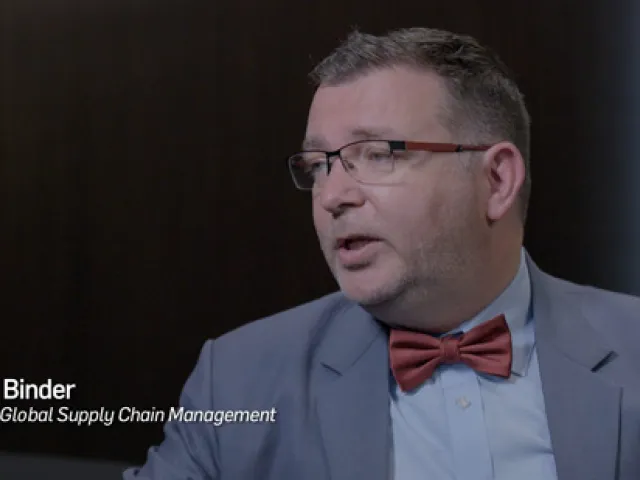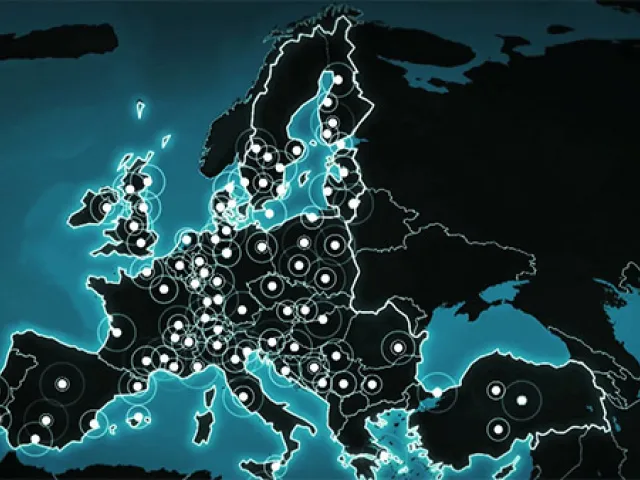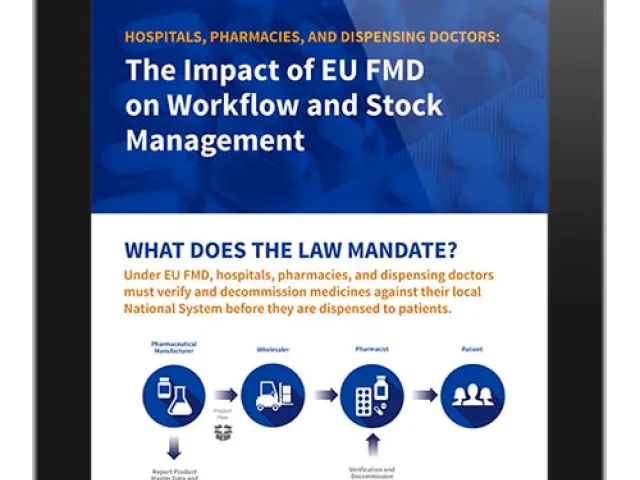Table of contents
For pharma companies that will ship product under the EU Falsified Medicines Directive (EU FMD), the deadline for compliance is less than two years away. The technical requirements will challenge your traditional packaging processes and require
Laetus is at the forefront of helping customers overcome these challenges. Based in Alsbach, Germany, the company is heavily focused on large and small brand owners and CMOs that are looking to serialize by the 2019 deadline. Founded in 1974, and with more than 250 employees worldwide, Laetus specializes in L1-L3 track and trace and supply chain control solutions for a global customer base.
We recently spoke with Laetus General Manager Christoph Staub to find out why humans have a major impact on track and trace systems, what insights supply chain companies can gain from serialization beyond compliance, and more.
What industry expertise does Laetus provide?
We’ve supported quality inspection for more than 40 years, focusing on very specific pharma packaging processes. What differentiates us as a Level 1 to Level 3 specialist is that we maintain our own proprietary hardware parts, including machine modules, lighting devices, and transport solutions. We also have the combination of deep software expertise—ranging from firmware embedded in cameras and other devices, up to plant-level track and trace management systems at Level 3. We also provide application services from consultancy through deployment, installation, and support.
When do companies need to start preparing for EU FMD?
For companies that haven’t started preparing yet, it’s already very late. If they have not made their decision about serialization equipment for the packing line, they face a big risk of not being ready by 2019. The challenge starts with the availability of supply resources. Very few serialization projects have been successfully completed within the original time schedule set.
Once you implement, you immediately go into a learning and optimization phase. There’s a big risk that companies will be late and need to find ways to mitigate their risk of not being able to supply products to the market.
From your perspective, what challenges is the industry running into with serialization?
One of the biggest challenges is that the market is so fragmented. With the implementation of traceability, many different parties suddenly have to exchange information—no longer in a pure paper or simple digital form—but in a real-time standardized digital form. On a packaging level, it's fairly clear how to do it. But as soon as we talk about data, data exchange, and data ownership—that's where customers start to scratch their heads.
What’s so challenging about data-related serialization issues?
The huge data volumes create investment and performance issues. Companies think they can simply interface with other systems by exchanging in EPCIS format. Unfortunately, these are just false phrases: real life is much different. We have yet to see a so-called “standard” interface or protocol. Everybody has invented their own little rules about how to structure and manage their data.
How is serialization changing the way pharma companies do business?
Serialization affects almost every department—it’s not just happening down in the packaging department. The individualization the pharma industry has maintained for decades is now biting back from the technology side. Even if a company says they have five identical packaging lines on the shop floor, you can walk the five lines and immediately spot the differences just by looking. If a product is running better on one line than on the other, the lines have started over time to become optimized to that specific situation.
In the end, companies have created, line by line, a bespoke and individual process. As serialization is changing processes, we're not able to just copycat from one process to the next because they have not been standardized. If you look at how much legacy equipment pharma is using, it’s unbelievable.
Even a little thing like different firmware on a printer—let’s say the model is exactly
Are companies going forward with aggregation even though it’s not required under EU FMD?
Just like in the U.S., supply chain partners are starting to publicly demand or strongly recommend aggregation because they understand that serialized product is very difficult for them to handle.
We see an increasing number of customers aggregating product right from the beginning because of business benefits beyond compliance that are only accessible if you aggregate.
Will it be more difficult to implement aggregation at a later date if you expand to a market where aggregation is required, or your partners begin to demand it?
Absolutely. Aggregating later means you will have to start all over again. Initially, it will be a higher investment to bring packaging lines to a fully aggregated stage. But if you need to aggregate in the future, with two split projects, the total cost will be even higher than an initial investment.
Does master data play a crucial role in serialization?
Customers with lots of product underestimate how much additional effort serialization is bringing to the maintenance of master data. It's going to be quite challenging to set up, maintain, and
What lessons have you learned that would make for a smoother implementation?
Do whatever you can as early as possible so you do not suffer later in the project. Companies need to bring all stakeholders to the table as early as possible and work through all the processes. Whether you want to do one bespoke packaging
Be sure to plan for a lessons-learned, optimization phase. Don't plan your installation in such a way that the day after site-acceptance testing and final production qualification, you have to go live into
Humans are humans. They will not work exactly the way they are being told in their training or operator manual. Not by bad intentions, but until they understand what the process is, they will continually bring the system to a full stop. That’s why we opened a track and trace training academy 2 ½ years ago, and why today we are overbooked.
People are different from line to line, from shift to shift, from company to company, so respect this. The biggest impact on system performance is from human beings.
What potential advantages does serialization provide?
Serialization provides visibility for pharma companies to plan
Serialization means companies will be able to reduce quality costs. With a full implemented traceability scheme, you can make hierarchical recalls, calling back down to the single pack from the market if necessary. It’s also much easier for the manufacturer to know exact time intervals on the packaging line, so they can know in which pallet, in which case, in which box they would find the product that is potentially impacted by the quality issue they found.
How is the partnership between Laetus and TraceLink helping customers meet EU FMD regulatory requirements?
Our two leading companies are delivering a full-fledged, comprehensive solution where customers don't have to worry about anything. The TraceLink-Laetus partnership provides a one-stop shop for serialization, ensuring you get a seamless solution from Level 1 up to Level 5.
 Christoph Staub is General Manager of Track and Trace at Laetus, overseeing track and trace technology, development, and production for automated packaging control systems. Before joining Laetus in 2012, Staub was Commercial Director at Hapa, a Swiss packaging specialist. He has served in product management and marketing roles in the life sciences industry for the past 20 years.
Christoph Staub is General Manager of Track and Trace at Laetus, overseeing track and trace technology, development, and production for automated packaging control systems. Before joining Laetus in 2012, Staub was Commercial Director at Hapa, a Swiss packaging specialist. He has served in product management and marketing roles in the life sciences industry for the past 20 years.








